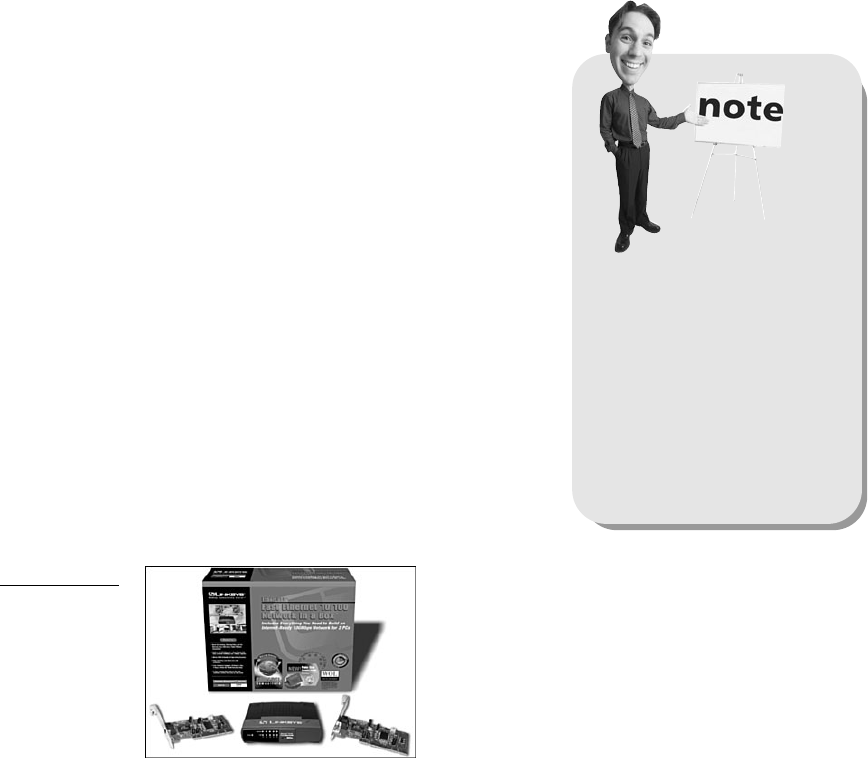
Types of Network Connections
Now that you know what to expect from your Media Center PC after your network is
up and running, let’s cover some basics. The first step in getting your PCs connected
to each other is to set up your physical network. This means making physical data
connections between the computers in your home. There is an ever-expanding list of
network architectures to choose from, but the most popular options for home net-
working today include Ethernet, wireless, phone line, and power line.
Ethernet
The “old standby” in networking, Ethernet cables
are one of the best supported and downright cheap-
est ways to get the job done. They can also provide
much faster network speeds (typically 100Mbps)
than the other options listed in this chapter, and
they are easier to keep secure than the new-fangled
and enormously popular wireless variety. Your
Media Center PC comes with a network interface
card (NIC) installed, so all you need to do is plug
an Ethernet cable into it, then plug the other end
into a device such as an Ethernet hub. Follow the
same procedure for your other PCs, and you’ll soon
be in business.
If this is your first networking experience, you
might consider buying a preconfigured Ethernet kit,
such as the one pictured in Figure 22.1.
CHAPTER 22 XP MEDIA CENTER AND YOUR HOME NETWORK
301
FIGURE 22.1
This inexpensive
kit from Linksys
contains two
NICs, cables,
drivers, and a
five-port hub.
If you only want to con-
nect two PCs, you can do it
without using a hub. Instead,
you’ll need a ”crossover cable.”
The cable is inexpensive, but it is a
specialty item that will probably
require a trip to the electronics
store. Using a standard Ethernet
cable won’t work. If you want to
network more than two comput-
ers, you’ll need a hub.





